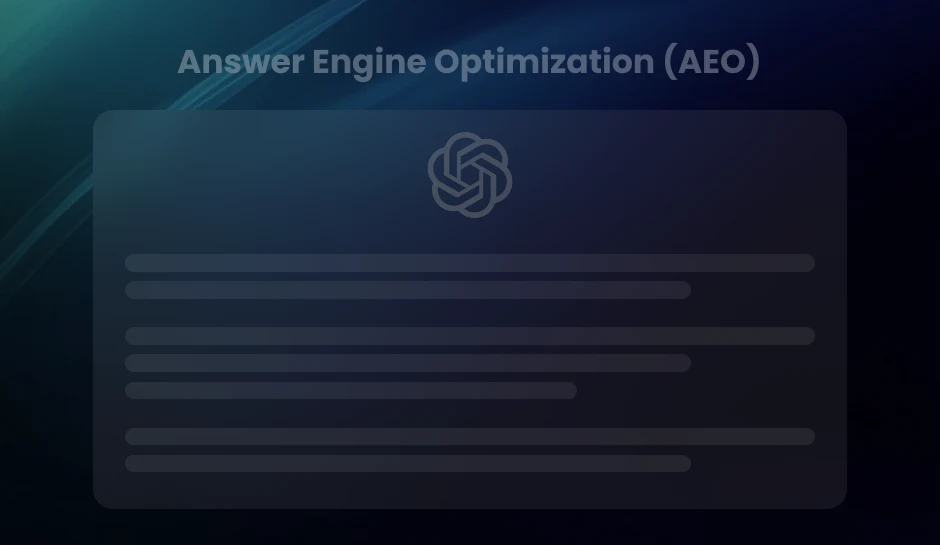
How to Calculate Attribution: A Data-Driven Approach to Smarter Marketing
Struggling to understand which channels truly drive conversions? This guide breaks down how to calculate marketing attribution, choose the right model, and use data to improve ROI, campaign performance, and budget efficiency.
Marketing attribution has moved from a fringe concept to a core component of campaign strategy. With customer journeys stretching across multiple platforms from organic search and email to paid social and direct traffic, pinpointing what drives conversions has become non-negotiable. Attribution answers a critical question: Which touchpoints in a buyer’s path influenced their decision to convert?
By accurately calculating attribution, marketing teams identify what works, cut wasteful ad spend, and confidently invest in channels that deliver. Brands rely on assumptions instead of data, which misses performance gains. Those working with attribution models tailored to their funnel, single-touch or multi-touch, data-driven or position-based, tighten campaign performance and confidently prove ROI.
The Strategic Leverage of Attribution in Marketing Campaigns
Why Attribution Demands Attention
Attribution connects every marketing interaction to business outcomes. Without it, marketers operate on guesswork. With it, they allocate budget precisely, scale what works, and cut what doesn’t. Attribution draws a direct line between a campaign’s investment and its return. Without this line, optimization collapses into speculation.
Product Performance Starts with Attribution Insights
Understanding how audiences engage with a product begins with knowing where they come from. Attribution highlights which touchpoints influence conversion, clarifying the moments that drive users to act. For example, if product sign-ups climb significantly after exposure to influencer-led Instagram content, attribution reveals that trend and prompts strategic amplification of that channel.
Dissecting Channel Performance Through Attribution
Attribution models classify the role each channel plays in the conversion journey. Some channels introduce, others nurture, and a handful close the deal. Through attribution, teams can:
- Identify top contributors: Not just by traffic volume, but by assisted conversions and influence across stages.
- Distinguish high-cost, low-yield vs. low-cost, high-impact channels: Paid social might attract clicks, but email may generate higher conversion value per dollar.
- Pinpoint redundancy or cannibalization: You’ll spot overlaps where multiple paid efforts compete for the same user.
Mapping and Optimizing the Customer Journey
Attribution builds the blueprint of how users navigate from brand discovery to final purchase or abandonment. By tracking sequential touchpoints, marketers can:
- Uncover friction points that disrupt progression.
- Find the most influential pre-conversion behaviors.
- Refine messaging to match decision-stage psychology across platforms.
Imagine knowing your target buyer watches two YouTube reviews and browses your pricing page before converting-attribution turns that assumption into fact.
Driving ROI and Maximizing Budget Efficiency
Every dollar spent should deliver a measurable impact. Attribution provides the framework to prove and enhance that impact. With performance and visibility comes strategic budget reallocation toward the channels and campaigns that earn real results.
According to Nielsen’s 2022 Annual Marketing Report, 64% of marketers cited improved ROI when using attribution models alongside media mix modeling. These aren’t theoretical numbers- they represent direct budget efficiencies achieved through analytics-informed decisions.
Shift funds from awareness-heavy, low-yield impressions to conversion-intent placements and watch your cost-per-acquisition drop. That’s attribution in action, turning visibility into velocity.
Pro Tip- Use attribution data not just to validate past performance, but to forecast future outcomes. Regularly analyze which channels consistently drive high-value conversions, and build predictive models to guide proactive budget shifts, ensuring every dollar fuel measurable, scalable growth.
How the Attribution Process Really Works
Map the Customer Journey: Start with the Right Data
Attribution begins with a granular view of customer interactions across platforms, channels, and devices. This means capturing every relevant touchpoint: from the first ad impression and email open to organic search visits and final clicks before conversion. Without a comprehensive map, attribution is simply a guess.
To obtain this map:
- Track digital events using pixels, UTM parameters, and analytics tools.
- If applicable, include online and offline channels like call center data or in-store QR scans.
- Maintain cross-device tracking with authenticated user IDs to avoid broken journeys.
Aggregating this data forms the foundational workflow of attribution. Without it, every step afterward collapses.
Assign Value to Channels: Not All Touches Are Equal
Next, quantify each step in the journey. Not every click or view holds the same weight. Early-stage touchpoints drive awareness, mid-funnel actions build intent, and final interactions close deals. Attribution modeling assigns specific value to these steps based on predefined logic or algorithmic input.
This process doesn’t guess who should get credit. It systematically models it. Whether through rules-based models like linear or time decay, or data-driven ones that calculate probability lifts, the goal is to distribute influence proportionally.
Consider the Entire Journey: Analyze in Context
No decision should be made in isolation. Channel effectiveness depends on the interaction context, how many other channels were involved, how long the cycle took, and which touchpoint nudged the buyer forward.
For example, a YouTube ad that leads to a search-driven site visit may only make sense when those data streams are tied together. Looking at a click in a vacuum underrepresents its role. Instead, stitching data across sessions, devices, and points of interest reveals actual influence, not just proximity to conversion.
Conversion Tracking: The Technical Backbone
Effective attribution hinges on robust conversion tracking. Tracking pixels, JavaScript tags, and analytics platforms must operate in sync, collecting data without duplication or loss. Hardcoded tracking setups often create discrepancies, so dynamic, tag-managed systems like Google Tag Manager streamline deployment and accuracy.
Data Accuracy: Clean Pipelines Deliver Clean Attribution
All attribution insights depend on clean, structured data. Mismatched UTM parameters, broken tracking links, or fragmented IDs compromise the model before it even runs. When duplicated events or missing timestamps enter the system, channel credit gets misallocated, and strategy decisions skew.
Use automated validation scripts, routine audits, and schema enforcement in your data warehouse or CDP. Platforms like Segment and mParticle offer middleware solutions that harmonize event streams before data enters analytics tools.
Pro Tip- Invest in a centralized data governance process to continuously monitor and clean your tracking setup. Regularly audit event firing, UTM consistency, and user identity resolution to ensure the attribution data pipeline remains accurate and trustworthy, because reliable attribution starts with flawless data.
How to Calculate Attribution Step-by-Step
Step 1: Map the Customer Journey
Start by identifying every touchpoint a customer interacts with from awareness to conversion. This includes email clicks, paid search ads, social media engagements, website visits, and offline interactions like in-store visits or calls to sales reps.
Construct a full path, whether linear or fragmented, that details each of these interactions. For digital campaigns, platforms like Google Analytics and Adobe Analytics can log these paths with user IDs or cookies, helping build a unified journey.
Step 2: Choose a Methodology
Pick an attribution model based on your business objectives, product lifecycle, and the data you can access. Selling low-cost consumer goods with short sales cycles? A last-touch model may suffice. Managing complex B2B funnels? Multi-touch attribution will offer a more accurate reflection of impact.
Don’t ignore context. A new customer acquisition campaign will need a different model than one focused on upselling existing users. Match the model to the campaign type and outcome you’re evaluating.
Step 3: Gather Data
Use marketing technology to collect as much granular data as possible. Capture events like impressions, clicks, video views, form submissions, and purchases. Integrate data sources- CRM, ad platforms, web analytics, and third-party tools- to consolidate cross-channel activity.
- Google Analytics 4: Tracks user journeys cross-device and cross-platform.
- Facebook Pixel: Provides behavioral data specific to Meta platforms.
- Customer Data Platforms (CDPs): Aggregate paid and owned media interactions.
The granularity of input determines the credibility of the output. No model can make good decisions with fragmented data.
Step 4: Assign Value
Apply the selected attribution model to assign a portion of conversion credit to each interaction. For example, in a time decay model, assign more weight to touchpoints closer to the conversion, while in linear attribution, distribute credit equally across all touchpoints.
Custom models let you assign weights based on business logic-perhaps 40% to the first touch, 30% to mid-funnel influence, and 30% to final interaction. Use model logic to ensure value allocation aligns with customer behavior patterns and strategic priorities.
Step 5: Calculate Cost vs. Attributed Value
Now tie spend to impact. Take the attributed revenue per channel and compare it with the cost incurred for each. For instance, if paid search drove 30% of conversions, generating $300,000, and the spend was $75,000, the ROAS (return on ad spend) is 4.0.
Work through this metric for each channel included in your attribution model. This cost-to-return analysis reveals hidden inefficiencies and top-performing investments.
Step 6: Measure and Refine
As new data flows in, attribution must adapt. Re-run your models periodically, weekly for high-volume campaigns and monthly for lower-throughput funnels, to detect shifts in user behavior or channel performance.
Based on this updated data, adjust bidding strategies, channel investments, and creative allocations. Attribution isn’t static. Real performance emerges only through continuous iteration and refinement of model outputs.
Pro Tip- Invest in a centralized data governance process to continuously monitor and clean your tracking setup. Regularly audit event firing, UTM consistency, and user identity resolution to ensure the attribution data pipeline remains accurate and trustworthy, because reliable attribution starts with flawless data.
Treat attribution as an ongoing process, not a one-time project. Regularly revisit and update your data inputs, models, and budget allocations to keep pace with changing customer behavior and market dynamics. Continuous refinement turns attribution insights into sustained competitive advantage.
| Aspect | Formula | Example Scenario | Result / Insight |
|---|---|---|---|
| Last-Touch Attribution ROI | ROI = (Revenue attributed to channel – Cost of channel) / Cost of channel | Paid Search ad costs $200 → Generates $1,000 in revenue | ROI = (1000 – 200) / 200 = 4.0 (400% return) |
| Multi-Touch Attribution (MTA) | Attributed Revenue = Segment Contribution × Total Revenue | Total Purchase Value = $800 Touchpoint Weights: – Facebook Ad: 20% – Email: 30% – Paid Search: 30% – Blog Post: 20% |
Facebook Ad = $160 Email = $240 Paid Search = $240 Blog Post = $160 |
| ROI (Return on Investment) | (Revenue from Channel – Cost of Channel) / Cost of Channel | Paid Search: $50,000 revenue on $10,000 spend | ROI = (50,000 – 10,000) / 10,000 = 4.0 (400%) |
| CPA (Cost Per Acquisition) | Total Campaign Cost / Number of Acquisitions | Campaign A: $20,000 / 1,000 customers Campaign B: $50,000 / 1,000 customers |
Campaign A: $20 CPA Campaign B: $50 CPA |
| CLTV (Customer Lifetime Value) | (Avg. Purchase Value × Purchase Frequency) × Customer Lifespan | Referral Program user: Lower initial conversion but higher CLTV | Prioritizes long-term profitability, justifying higher initial investment |
| Campaign Effectiveness | Tracked via CTRs, form fills, engagement metrics | High CTR doesn’t always mean high-value customers or ROI | Short-term indicator of responsiveness and reach |
| True Business Impact | Monitored via repeat purchases, referrals, retained revenue | Content and SEO may convert slowly but generate lasting impact | Reflects long-term customer value and brand loyalty (measured with CLTV & ROI) |
Translating Data into Decisions: Reporting Attribution Results with Precision
How to Build Attribution-Driven Reports
Attribution reporting communicates which marketing efforts deliver actual business value. To design reports that influence decisions, data needs to move beyond rows and columns- it must expose impact and enable comparison across channels, campaigns, and buyer stages.
Start by articulating the report’s core question: Was our spend on Google Ads or LinkedIn more effective for mid-funnel conversions? Which touchpoints drive revenue, not just clicks? Then, structure the report to align with these analytical objectives.
- Standardize source definitions: Ensure every channel, campaign, and medium is tagged uniformly using UTM parameters or tracking codes.
- Segment users by journey stage: Break down performance by top, middle, and bottom of the funnel to uncover role-specific touchpoint effectiveness.
- Include model comparisons: Highlight results using different attribution models to present a spectrum of insight, from first-click to data-driven.
- Incorporate control group data: If lift analysis is available, integrate impact differentials between exposed and control audiences.
Visualizing Attribution Flow Across the Journey
Visual representations clarify contributor roles in the customer journey. Funnel graphics, Sankey diagrams, and weighted-path visuals illustrate user movement from first touch to conversion.
- Sankey diagrams capture multichannel flows and help pinpoint high-attrition stages.
- Customer journey maps overlay touchpoint weights from attribution models, highlighting influence at each point.
- Time decay waterfalls show how value accumulates across the timeline of a customer journey.
In dashboards, dynamic filters allow stakeholders to isolate cohorts like high-LTV customers or a specific campaign segment and see how their journeys differ.
Stakeholders to Involve
Attribution doesn’t solely serve the marketing department. Actionable reporting empowers cross-functional strategy alignment.
- Marketing team: Needs detailed touchpoint sequencing and channel ROI data to optimize future campaigns and budget allocations.
- Finance team: Requires accurate cost attribution and incremental return figures to guide future investment decisions.
- Sales/product teams: Can align nurture sequences or feature positioning based on the channels and content driving qualified leads or early product engagement.
When launching attribution reports, bring these teams into review sessions. Prioritize interactivity filtering, time range selection, and segmentation so that each department can extract functional insights.
Cracking Attribution: Overcoming Common Challenges
Data Silos and Lack of Integration
Attribution falters when data lives in fragmented systems. A CRM that doesn’t sync with your advertising platform or a website analytics suite that doesn’t connect with your email campaign software creates blind spots. That fractured picture muddles the customer journey and skews results.
Fix this by aligning your martech stack with APIs, CDPs, and ETL tools. For example, integrating Google Analytics 4 with Salesforce through platforms like Segment or Zapier fills in the gaps. When teams can access the same datasets in real time, attribution gains accuracy and relevance.
Attribution Across Offline and Online Channels
Marketing doesn’t stop at the screen. TV ads, direct mail, and in-store promotions influence consumer decisions, yet don’t leave digital footprints as easily as clicks or impressions.
To unify these touchpoints, use promo code tracking, call tracking systems, and post-purchase surveys. Tools like Neustar and LiveRamp allow identity resolution across offline and online identities, making assigning value to every digital or physical touch possible.
Short Sales Cycles vs. Long Buying Journeys
B2C often works on impulse. Think e-commerce, a product page visit followed by a purchase minutes later. Long B2B cycles, on the other hand, span weeks or even months with multiple stakeholders and complex decision paths. Attribution modeling must adapt accordingly.
Short cycles benefit from single-touch models or session-based attribution. Long journeys require multi-touch attribution or even machine learning models that can weigh each interaction based on conversion likelihood over time. Customize your model to mirror the true nature of customer engagement – one-size-fits-all doesn’t apply here.
From Insight to Impact: Using Attribution to Drive Smarter Decisions
Attribution doesn’t end with credit assignment- it begins a chain reaction of smarter planning, sharper targeting, and more efficient spending when marketers treat attribution as an ongoing strategic tool rather than a one-time assessment. Every campaign benefits.
Data reveals what worked. Attribution explains why it worked. The next step is action.
Expand Gradually Without Getting Overwhelmed
Early-stage attribution doesn’t require complex algorithmic models. Starting with basic models like first-touch or last-touch attribution builds familiarity with user journeys and channel performance. These simple frameworks still introduce structure and accountability into marketing efforts.
Once consistency in data collection and reporting are in place, evolve naturally: test position-based models, dip into time-decay structures, and head toward multi-touch or algorithmic methods. The side-by-side model comparison will clearly show where overspending or underspending occurs across touchpoints.
Evolve Attribution as Campaigns Scale
Static attribution ignores market dynamics. Campaign performance shifts as consumer behavior, creative strategy, and platform algorithms change. That’s why marketers who continuously revisit and recalibrate attribution models outperform those who do not.
- Relaunch attribution analyses after every campaign sprint or product launch.
- Incorporate updated engagement paths as new channels go live.
- Pivot attribution models to reflect changing sales cycles or funnel structures.
- Refining attribution is not a one-off adjustment – it’s a recurring discipline embedded into marketing operations.
Watch What Happens When You Act with Clarity
Clear attribution brings more than cleaner reports. It tightens budget allocation, spotlights high-impact touchpoints, and fuels conversions by replicating success. Teams that know how value flows through their customer journey spend smarter, not harder, while driving exponential returns on every campaign they launch.
What will you adjust first in your strategy now that you know exactly what drove your last conversion?
Find out with DiGGrowth. Email us at DiGGrowth are here to help. Drop us a line at info@diggrowth.com to get started.
Key Takeaways
- Accurate attribution models—whether single-touch, multi-touch, or data-driven—help identify which marketing touchpoints truly influence conversions, enabling smarter budget allocation and eliminating waste.
- Short B2C cycles can function with basic attribution models, while long B2B journeys require multi-touch or algorithmic approaches to capture the full buyer path and nurture stages.
- Without a unified tracking infrastructure, consistent UTM tagging, and cross-platform data integration, attribution insights lose accuracy. Clean data enables actionable insights.
- As campaign dynamics, platforms, and customer behavior evolve, so must attribution models. Regular audits, testing, and model refinement are essential to maintain relevance and precision.
Ready to get started?
Increase your marketing ROI by 30% with custom dashboards & reports that present a clear picture of marketing effectiveness
Start Free Trial
Experience Premium Marketing Analytics At Budget-Friendly Pricing.

Learn how you can accurately measure return on marketing investment.
Additional Resources
Don’t Let AI Break Your Brand: What Every CMO Should Know
AI isn’t just another marketing tool. It’s changing...
Read full post postFrom Demos to Deployment: Why MCP Is the Foundation of Agentic AI
A quiet revolution is unfolding in AI. And...
Read full post postAnswer Engine Optimization (AEO): The New Frontier of SEO in 2025
As digital experiences continue to evolve, so does...
Read full post postFAQ's
Marketing attribution is the process of identifying which marketing efforts influence a customer’s decision to convert. In a multi-touch digital environment, it helps pinpoint the channels that truly drive results. Accurate attribution enables marketers to allocate budget wisely, reduce wasted spend, and clearly measure ROI across campaigns.
Common attribution models include first-touch (credit to the first interaction), last-touch (credit to the final interaction), linear (equal credit across all touchpoints), time-decay (more credit to recent interactions), and position-based (emphasis on the first and last). Data-driven models use machine learning to assign credit based on real impact. The right model depends on your goals and sales cycle.
Start by mapping your customer journey and identifying key touchpoints like emails, ads, and website visits. Choose a basic model, such as last-touch or linear, and use tools like Google Analytics to track interactions. As your data improves, explore more advanced models like multi-touch or data-driven attribution for deeper insights.
Tools like Google Analytics 4, Facebook Attribution, and Adobe Analytics help track and model user interactions. Customer Data Platforms (e.g., Segment, Tealium) unify data across sources, while tag managers like Google Tag Manager ensure accurate event tracking. Using a combination of these tools gives a clearer view of cross-channel performance.
Attribution models should be reviewed regularly, weekly for fast-moving campaigns, and monthly for longer cycles. Reassess your model when launching new campaigns or if customer behavior shifts. Ongoing audits ensure your data stays accurate and your model reflects real user journeys, helping you make better marketing decisions.
 Shahzad Mussawir
Shahzad Mussawir  Rahul Sachdeva
Rahul Sachdeva 

